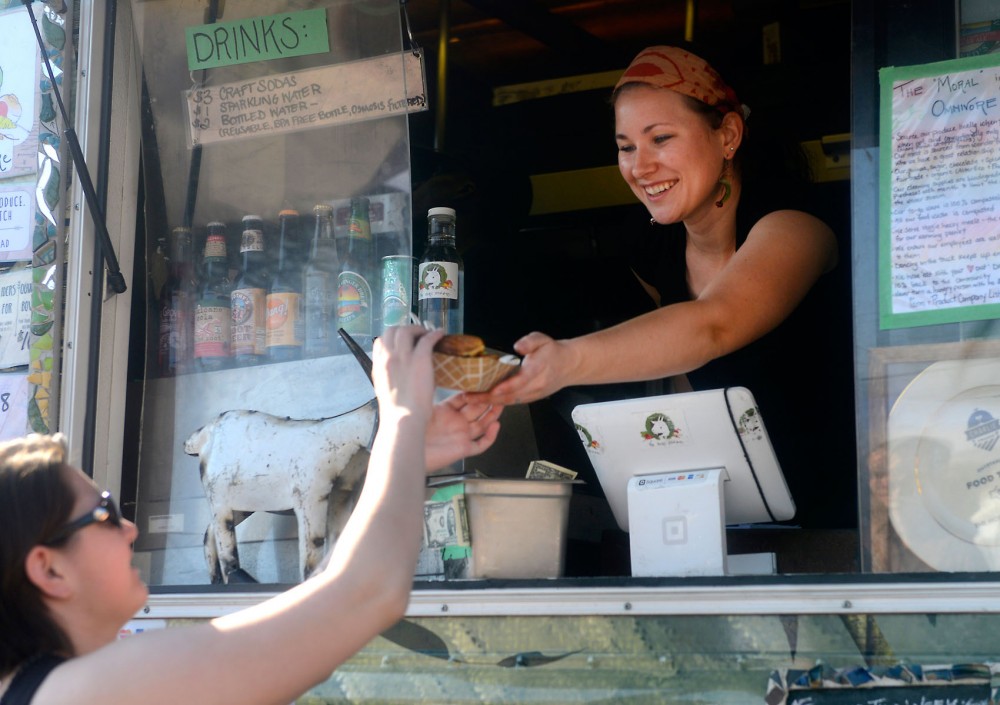People of all ages congested the intersection of East Lake Street and Hiawatha Avenue for the grand opening of Midtown Farmers Market Saturdaymorning.
Visitors hand-picked fresh produce from more than 80 vendors, enjoyed live music and soaked up the sunshine.
The market is in its 13th year and draws residents from all over the metro area. Some city and neighborhood officials strolled the overcrowded market Saturday, promoting the city’s recent efforts to boost attendance. To do this, officials this year have created more online tools to increase awareness of these markets and authorized EBT payments at more sites.
Among market-goers on Saturday was Ward 9 City Councilwoman Alondra Cano. She said a recent trip to Barcelona, where the streets were packed with public markets, inspired her to advocate for more in Minneapolis.
“We could do a lot better. We could provide more jobs. We could support local businesses and help bring strategies forward for sustainability,” Cano said.
The recent push to promote more local food markets includes a new website to help residents and visitors find city farmers markets with an interactive map.
The City Council has also focused on opening up more vacant lots throughout Minneapolis for use by local farmers and vendors, Cano said.
“I think it’s great that the city put that together so that people can find local markets in their neighborhood,” said Miguel Goebel, manager of the Midtown Farmers Market.
Officials have also allowed the use of EBT at more farmers markets in recent years.
In 2006, the Midtown market was the first in the state to accept electronic food stamps, Goebel said.
There are more than 30 farmers markets in Minneapolis — most of which accept EBT payments. This gives more people with low incomes the opportunity to buy healthy local foods, Goebel said.
Heidi Eger, assistant manager for Midtown Farmers Market, manned the payment tent Saturday. She exchanged EBT payments for special tokens that are spent on food at the market’s farm stands and food trucks.
Eger said on a typical day she sees at least four customers per hour who use EBT. This year, new incentives sponsored by the Blue Cross and Blue Shield’s Center for Prevention could encourage more people to use food stamps to buy healthier foods. The first $5 a customer spends using EBT are matched by Blue Cross.
Cano said she would like to create more dollar-matching programs. She said the Farm Bill, which was passed last year, set aside federal dollars for a similar incentive program that wouldn’t be capped at $5. She said the city has yet to put this idea into practice, but she would like to start the program soon.
Goebel said more than $21,000 in EBT was used at the Midtown Farmers Market last year, and over $9,000 was given back in the form of tokens to food stamp users for use at the location.
Goebel said the new incentive program would benefit both the farmers and customers.
“The customer [benefits] because they have access to fresh, healthy food that they wouldn’t have normally,” he said. “It benefits the farmers as well because those are dollars they would not otherwise have been able to make.”







